Achille Pedespan
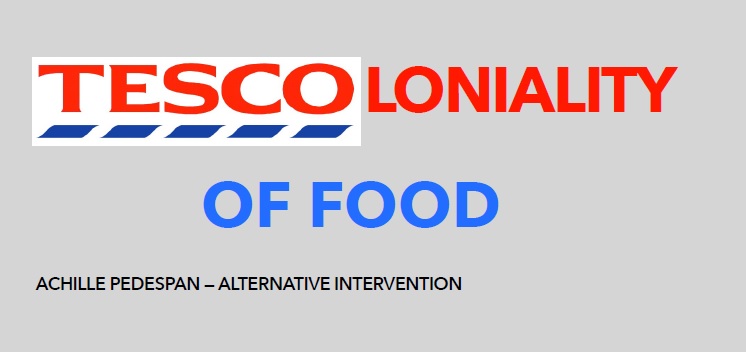
By the end of 2020, I was craving couscous, a North-African dish which is often granted the title of favourite meal of the French. It was not as easy as in France to find the ingredients to make one in Scotland… Craving curry would have been much easier. It made me realise the weight of the former colonisation process on the French and British supermarkets. To describe the impact of colonisation on contemporary life I refer to Anibal Quijano’s decolonial concept of “coloniality” (Quijano: 2007, 168). Coloniality is “the most general form of domination in the world today, once colonialism as an explicit political order was destroyed (Quijano: 2007, 170). I led a photographic investigation of the supermarkets around St Andrews (Tesco, Morrisons, Aldi and M&S) to study the concept of coloniality linked to food. I built the concept of Tescoloniality around that idea.
As a French citizen living in Scotland, I am myself an outsider to Scottish and British culture—although my cultural shock was not enormous as both countries are part of Western Europe. For example, when I arrived it was more strange for me to eat a fish cake (I had never seen that before) than Thai food (see photo 5). I wanted to work from that perspective, enhancing the first strangeness I felt in those supermarkets. Using a camera allowed me to keep a fresh eye on what I observed, to walk in those supermarkets as a tourist discovering a new country. Looking through a viewfinder makes everything appear differently, one takes distance from the subject of the photography to the point that it becomes itself étrange (> strange/foreign). I want my photographic study to work as a révélateur—I am playing on the French technical word when one processes film photos (the developing solution) which in French means what reveals. I want my photos to work as a “pure deictic language” showing and pointing to things that are not always noticed (Barthes: 1980, 10). Consequently, I wish my photos to reveal the existing colonial imaginary that exists in those supermarkets but which is not obviously seen. There is definitely something about “hauntology” in photography (Derrida: 1994, 10): Barthes calls the object photographed the “spectrum” because it refers at the same time to a spectacle and to a spectre (Barthes: 1980, 17). Therefore, through my photos I want to reveal that colonial spectre haunting the hallways of British supermarkets.
I used lomography films in order to enhance the green and yellow colours with a vintage finish in the photos in order to obtain gaudy but at the same time dull colours. This colouring reminds me of old adverts that have been worn by time. They are like the trace of something which existed but is still there, as in coloniality. The lens used allowed me to photograph with wide angle and therefore to have full shelves in the frame. The zoom allowed me to shoot closely the products and to focus on the packaging.
I chose to start and finish my selection of photos with pictures of hallways and signs indicating the way through “world flavours” from a hegemonic-western view of the world. I want the sequence of photos to become a wander in the hallways of a supermarket where one starts to notice coloniality. Moreover, they are the rare vertical photos of the selection, so they embody a door, an invitation to cross the threshold of this photographic reflection. Several of my photos work on the clash of cultures present on the packaging such as “British style chicken tempura” or Thai crisps alongside cheddar and onion ones (photos 5, 7 and 9 for instance). I also wanted to show the essentialising language used in supermarkets and advertisements through expressions such as “TASTE OF CHINA” (see for example photos on 1, 2, 3, 4 and 8). I want photo 6 to be a focal point because it is the third and last vertical image placed at the centre of the sequence. This photo works on the blurriness which enhances the shapes of the spices and bottles of soy sauce. No one can read the labels but everyone recognises what they represent. Also, the blurriness participates in revealing the “spectrum” of photography. Accordingly, this photo encapsulates my work: it is reflexive, it conjures up the haunting of coloniality and it directly questions our representations and imaginary.
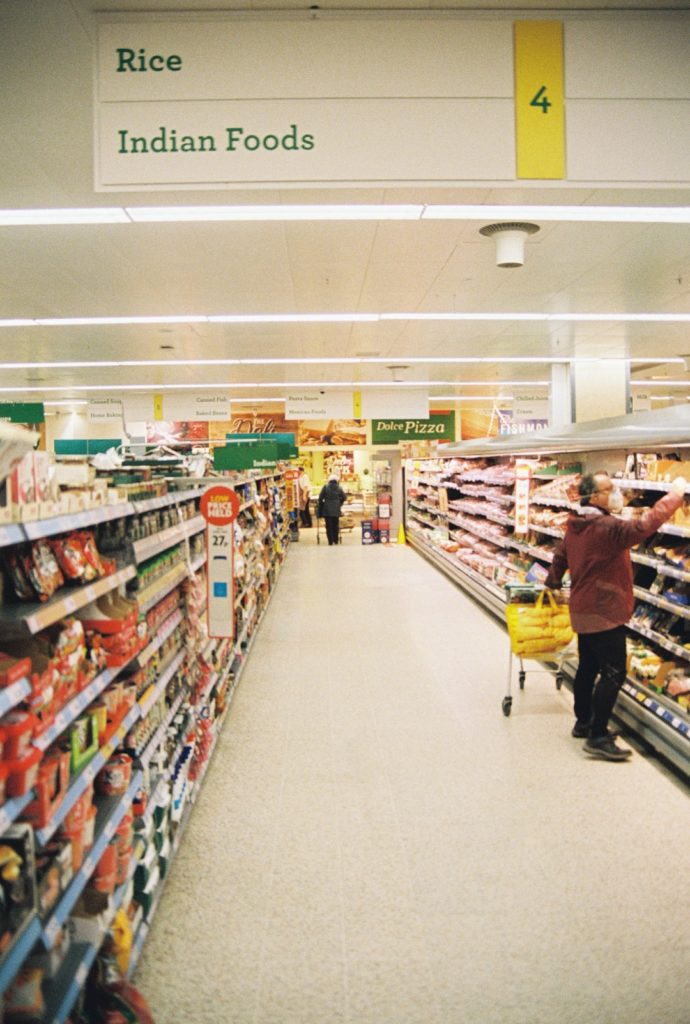
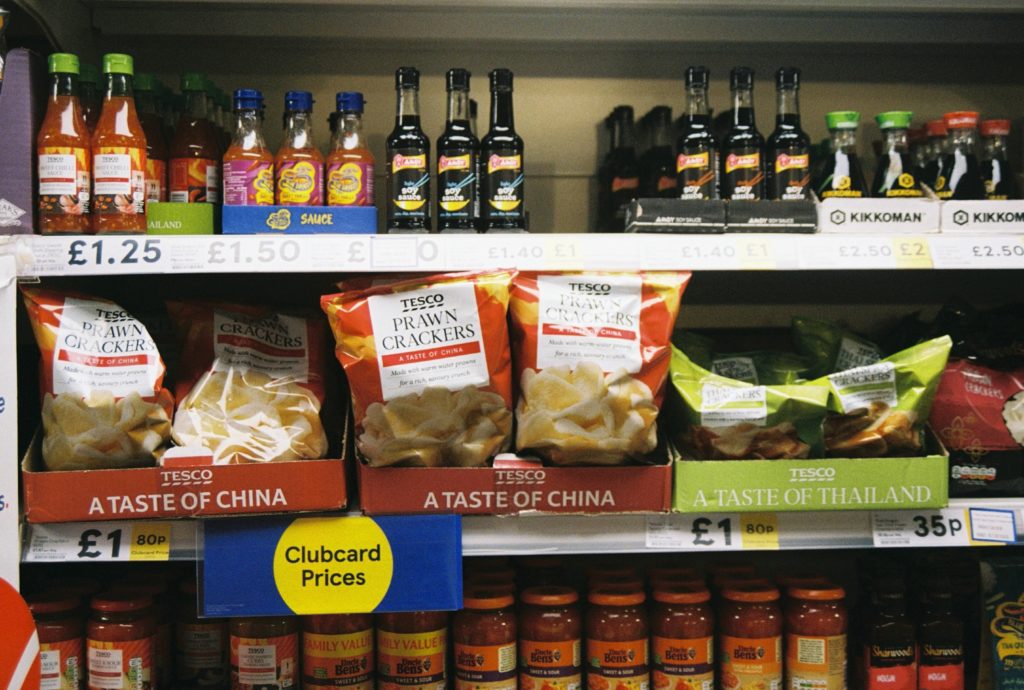
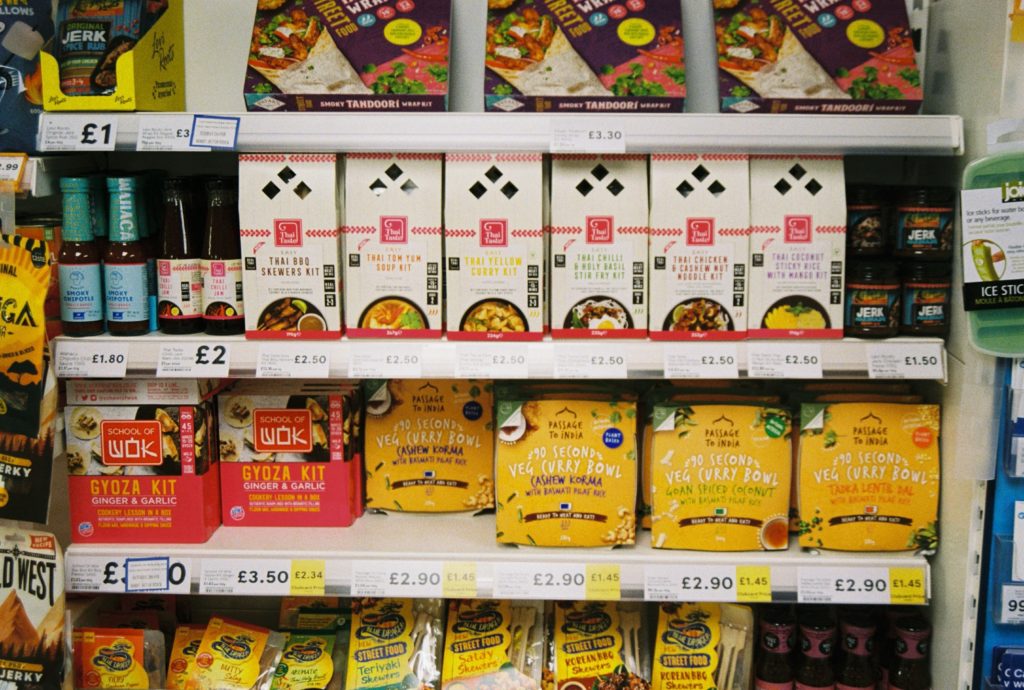

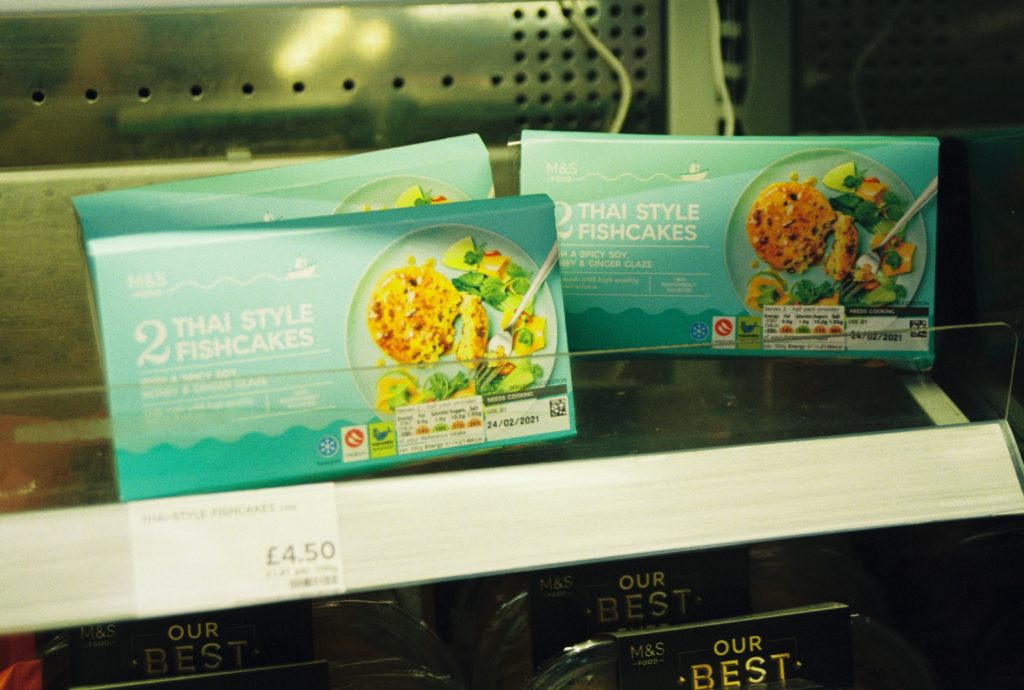
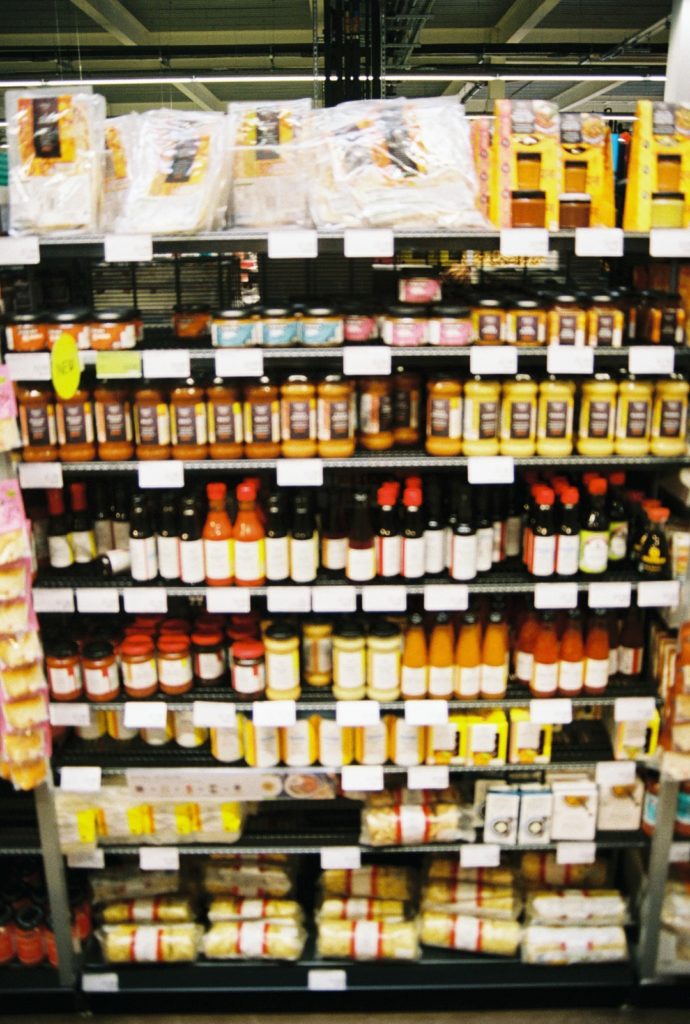
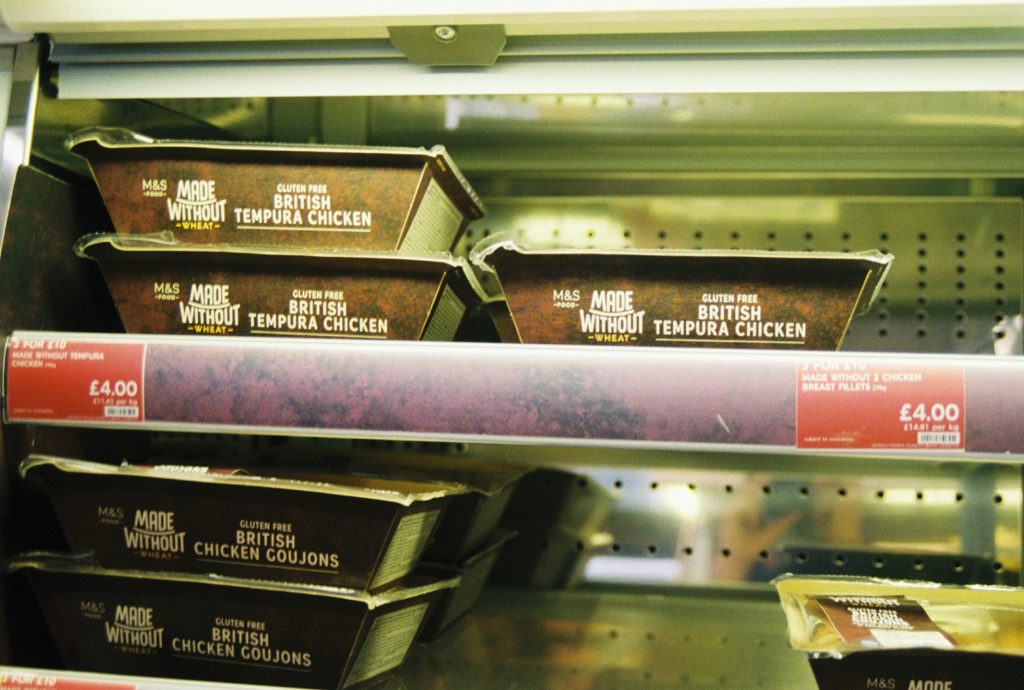

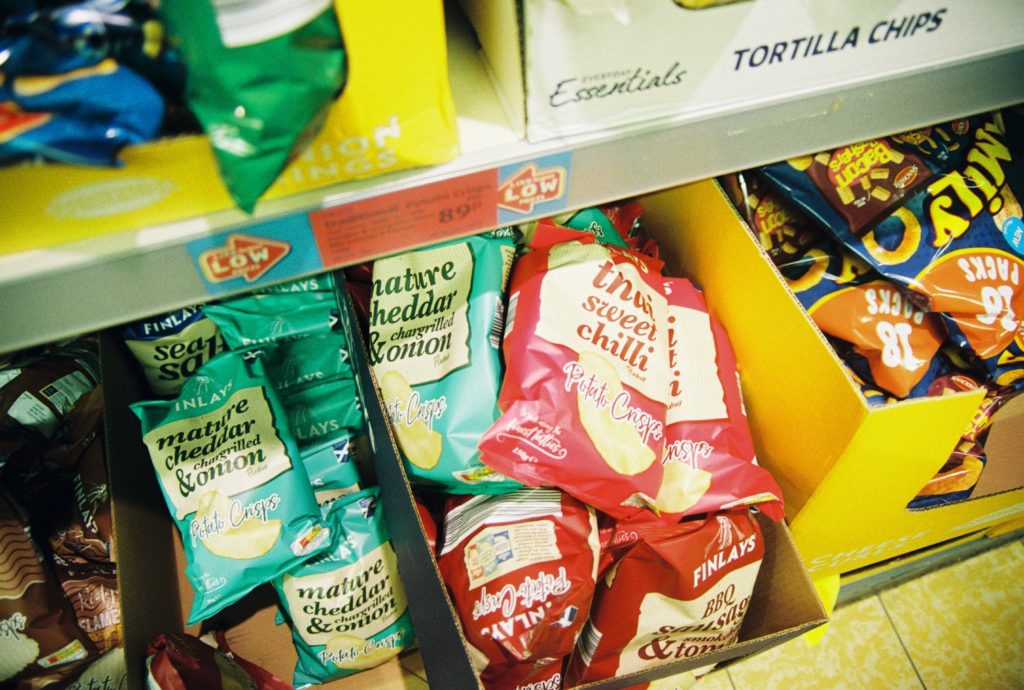
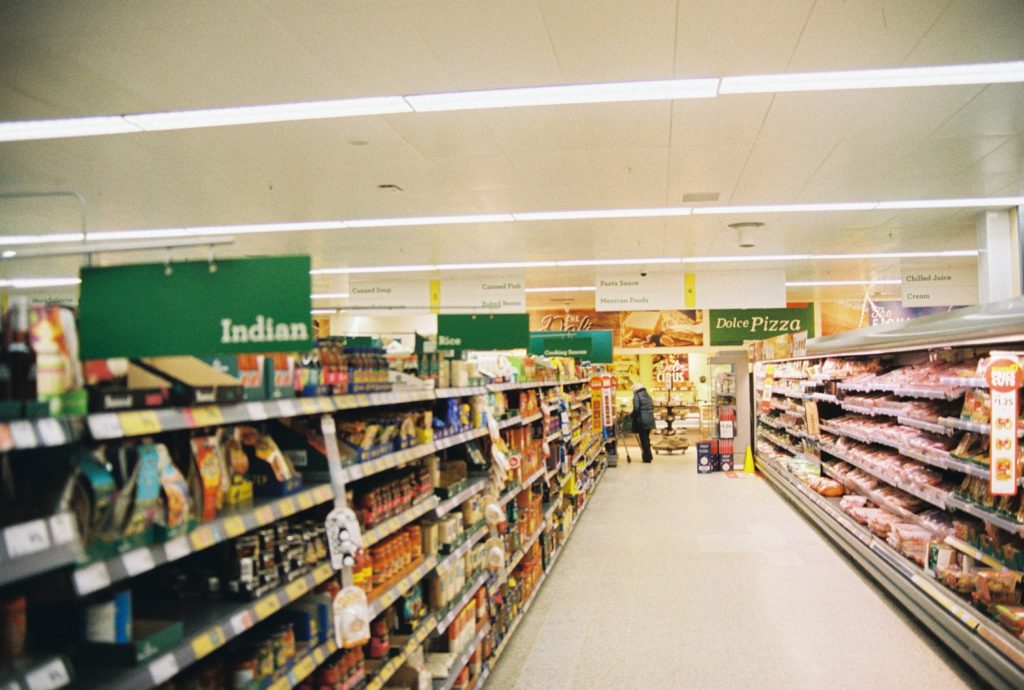
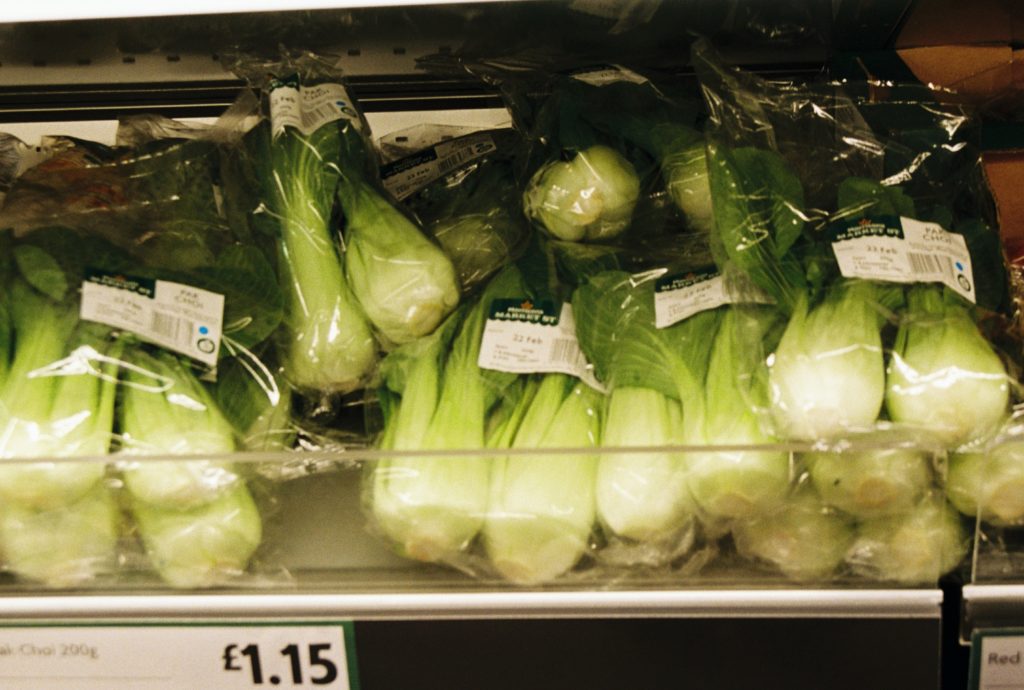
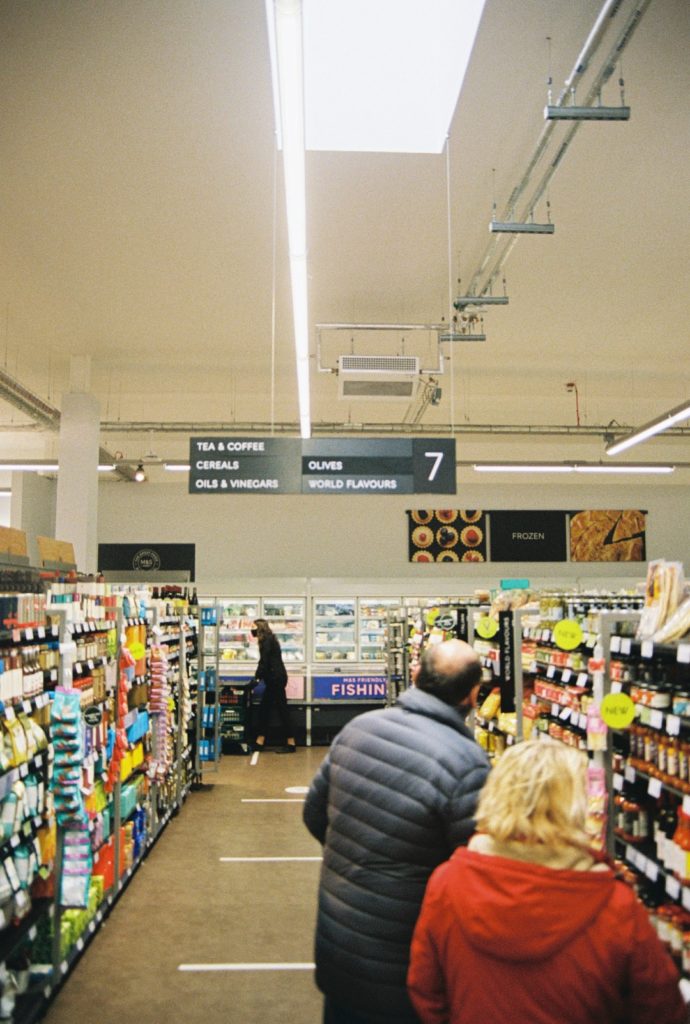
Click Below to Return to the Curation Front Page:
